Mo2
Mo2 is a web platform developed by a research group at the Universidad de Concepción, backed by the Chilean government, to collect time-use data through a more engaging, digital-first approach. The goal was to replace traditional travel and activity surveys with a gamified tool that users would actually enjoy completing — while still delivering accurate data for research and policy.
I joined the team to improve usability, engagement, and completion rates based on platform analytics, user testing, and experience design principles.
-
Design
UX audit, UX/UI design
-
Client
UdeC
-
Tags
The challenge
Early prototypes showed high drop-off rates and user confusion. Despite the innovation in approach, the platform struggled with:
- Overloaded screens and unclear question flows
- Difficulty in finding expected activities
- Low survey completion rates (only 42% of users finished)
- Cognitive overload, especially on text-heavy screens
- A lack of visual engagement and feedback for users
- Frustration around finding specific activities in the provided list
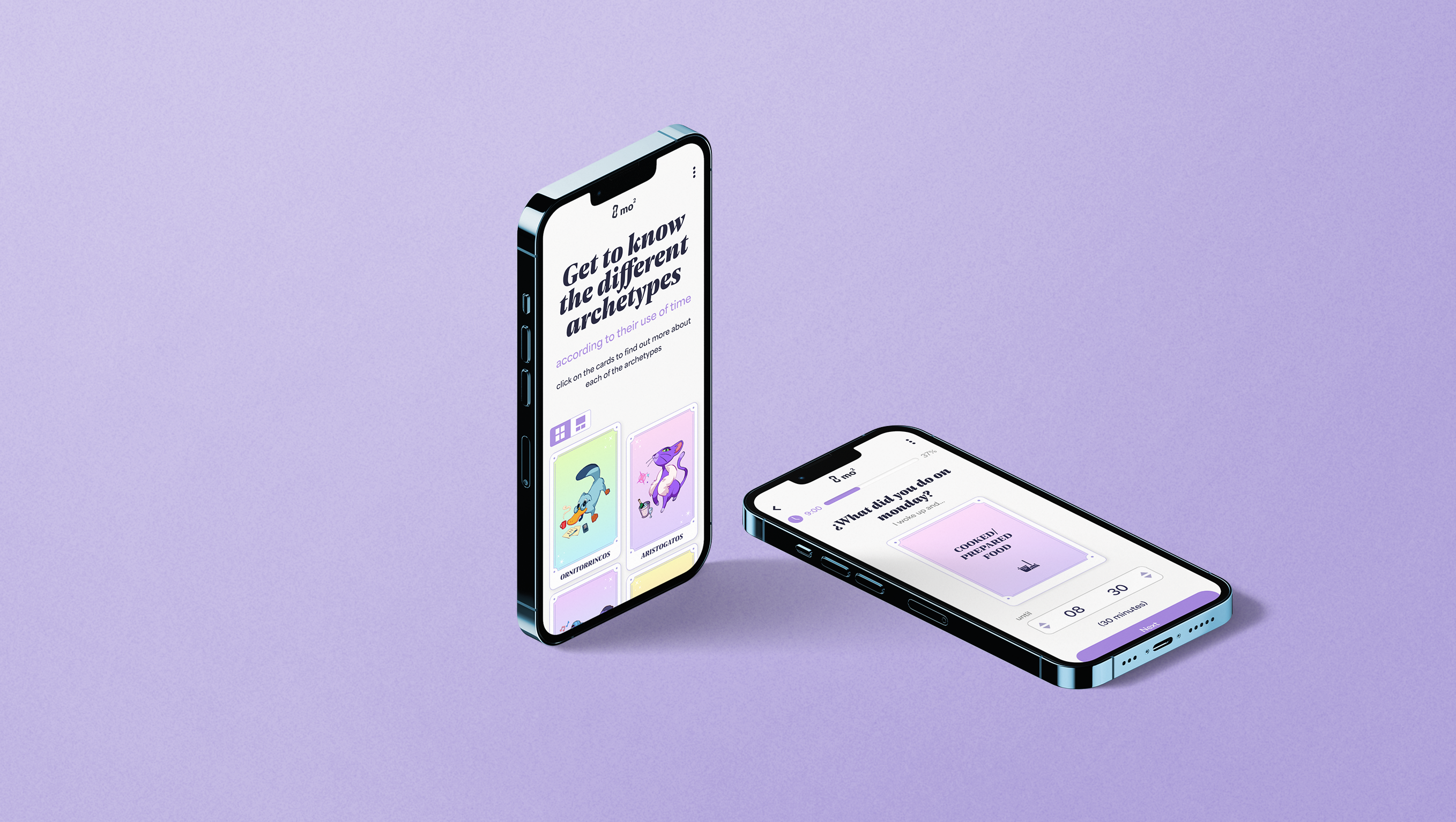
UX approach
UX Audit
Assessed user flows, screen content, and interaction patterns
Identified key friction points: overwhelming text, unclear transitions, and too many choices per screen
Evaluated the platform’s visual design for accessibility and clarity
User Understanding
- Reviewed usability test feedback to find pain points and behavioral patterns
- Identified target user personas and real-life usage contexts
- Based on findings, rewrote the way questions were presented:
→ shifted from asking users to input exact time durations
→ to suggesting schedule-based answers with feedback on duration, making it easier and more intuitive to respond - Addressed a common complaint: users couldn’t find the activity they had in mind in the list
→ Added search filters with multi-word matching to improve findability
→ Introduced nested categories to make browsing activities faster and more intuitive
Goal Alignment
Interpreted platform analytics to understand where users dropped off
Aligned design improvements with the platform’s dual goals: data quality and user engagement
Redesign & Prototyping
Rewrite approach to questions
Proposed a new flow to reduce friction and cognitive load
Reworked interactions and visuals to guide users through a clearer, lighter experience
Incorporated feedback loops and small gamified elements to reward progress
Audited app
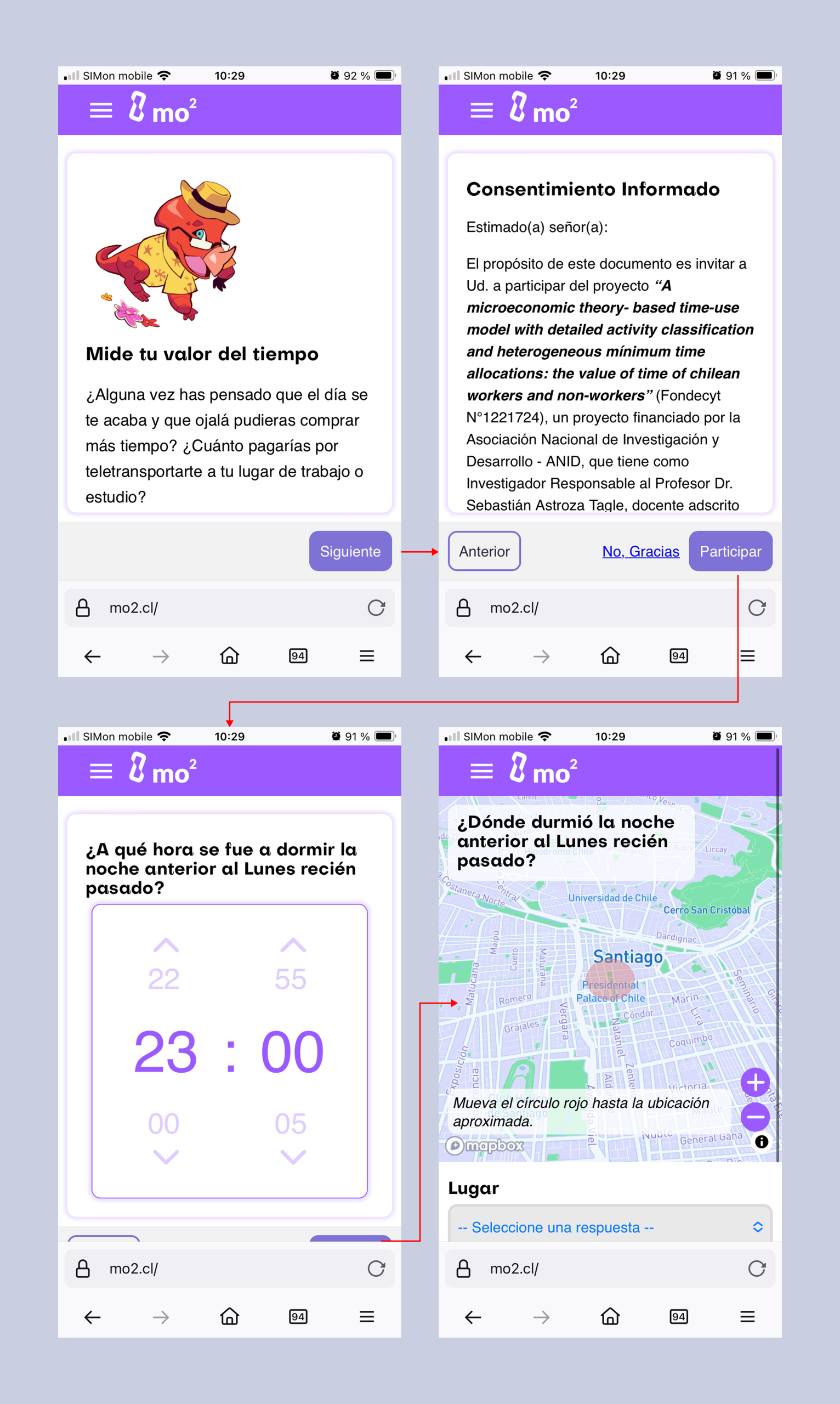
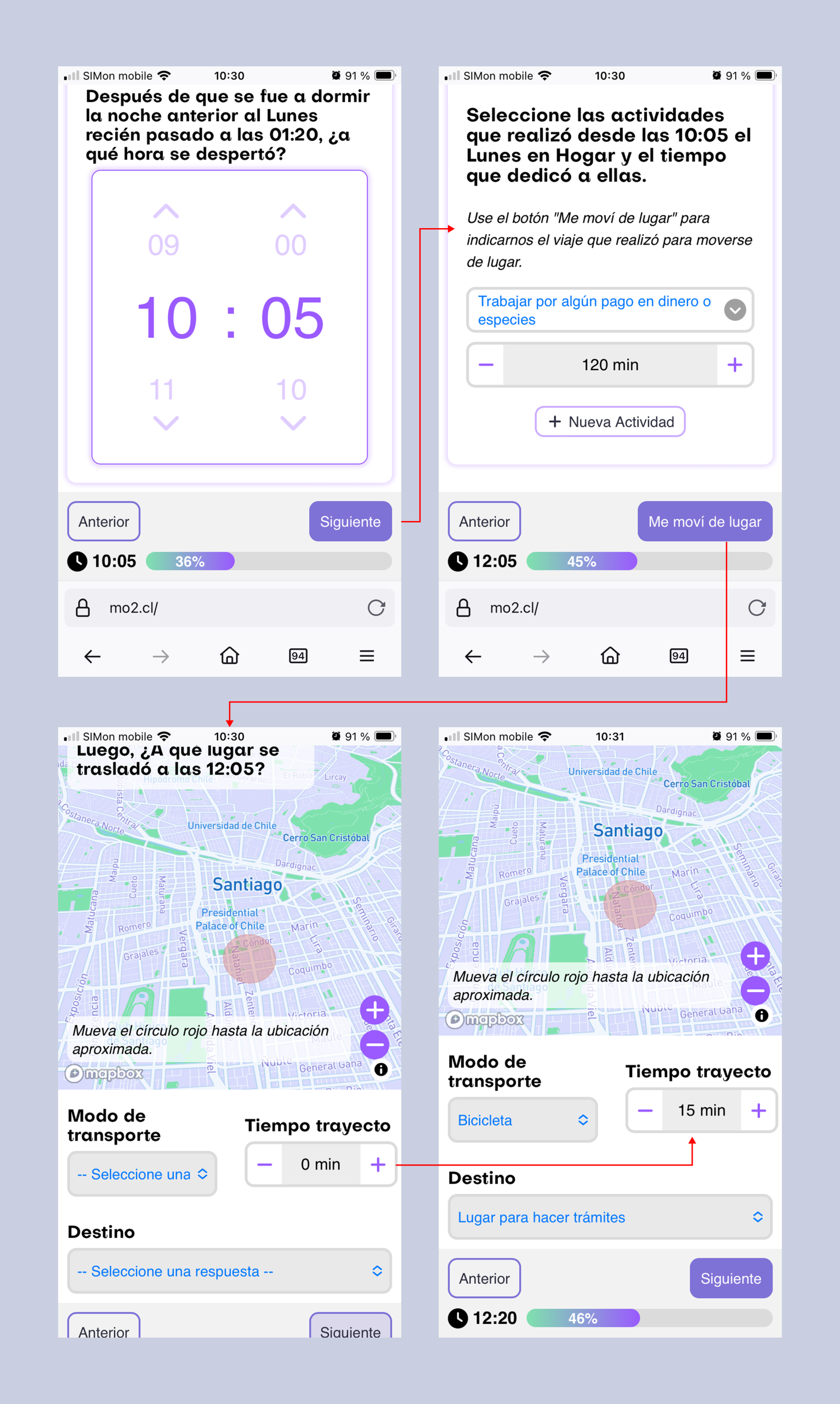
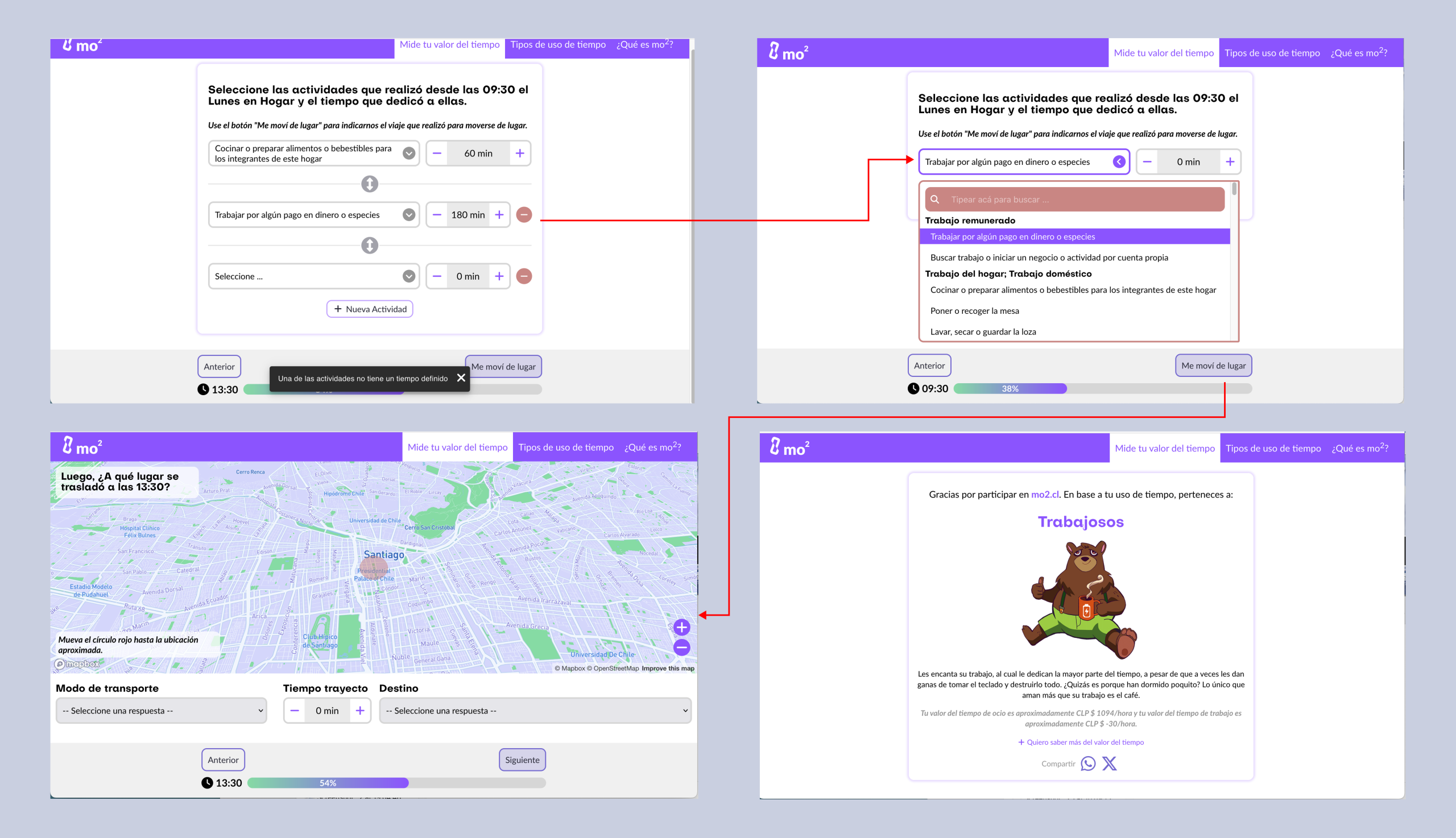
wireframes
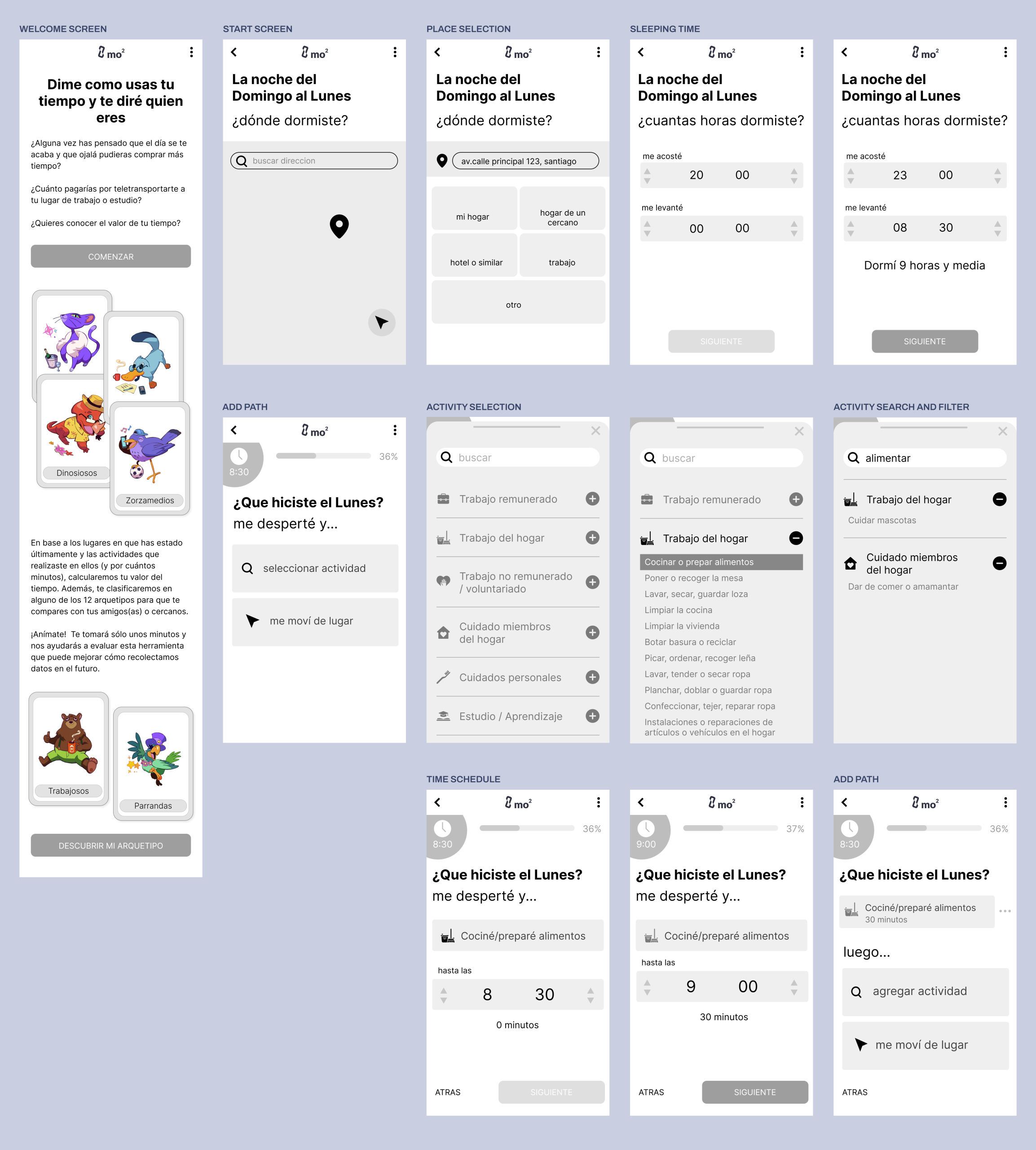
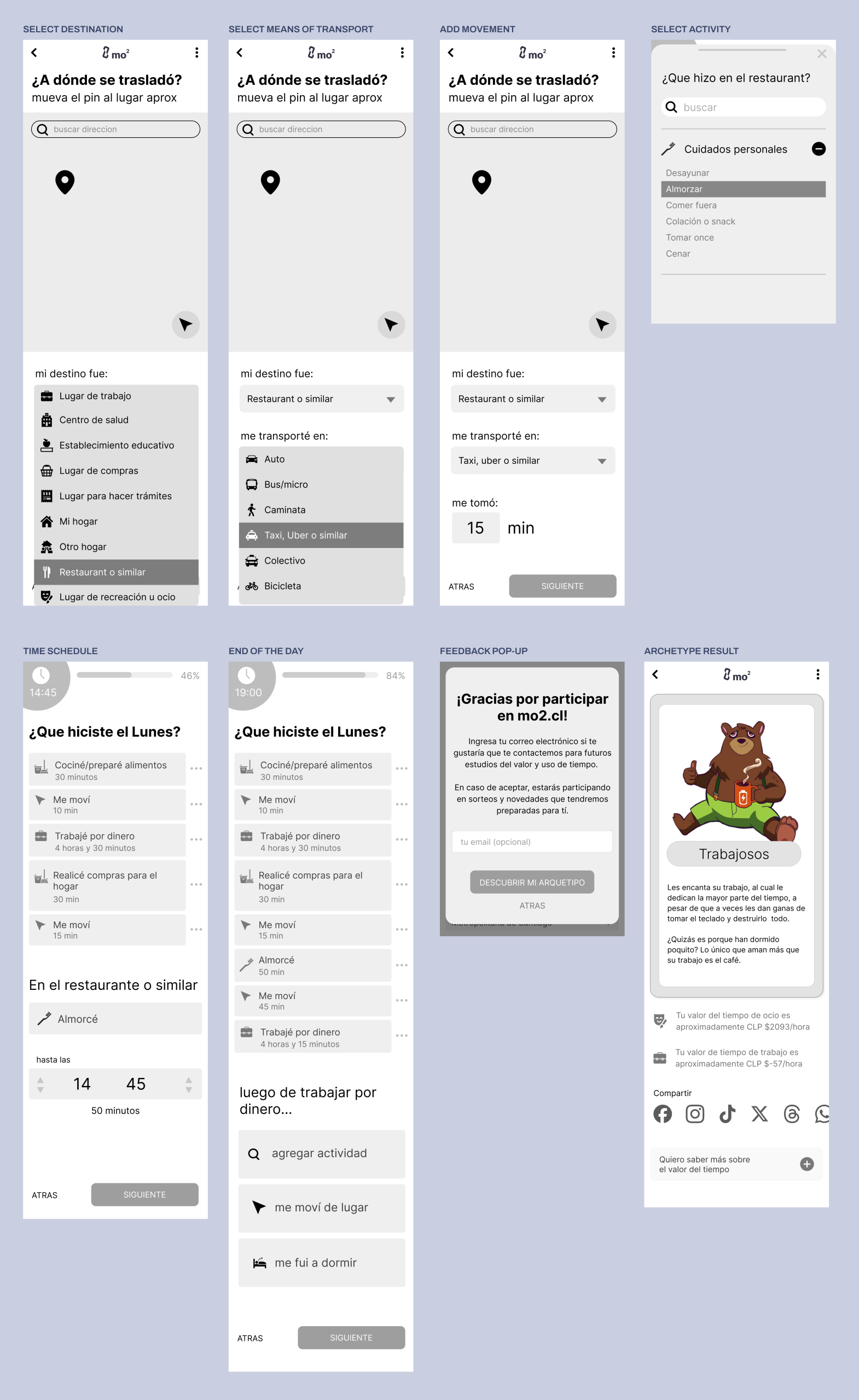
Impact
Completion rate increased by over 140%, jumping from 38% to 92%
User satisfaction rose by 46% in post-redesign usability testing, with improved clarity and enjoyment
Created a clearer, friendlier experience without compromising the depth of data collected
High fidelity mockups
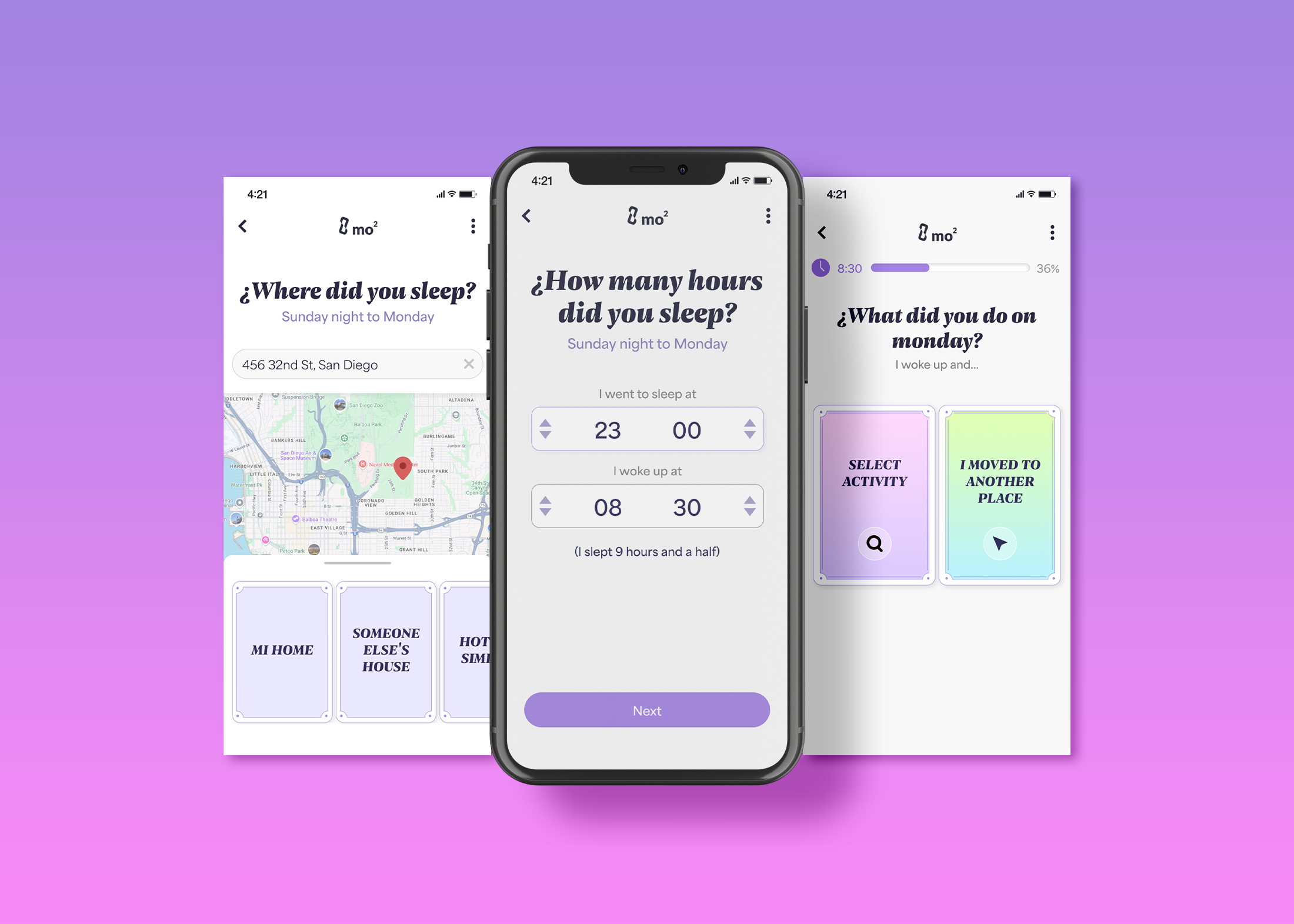
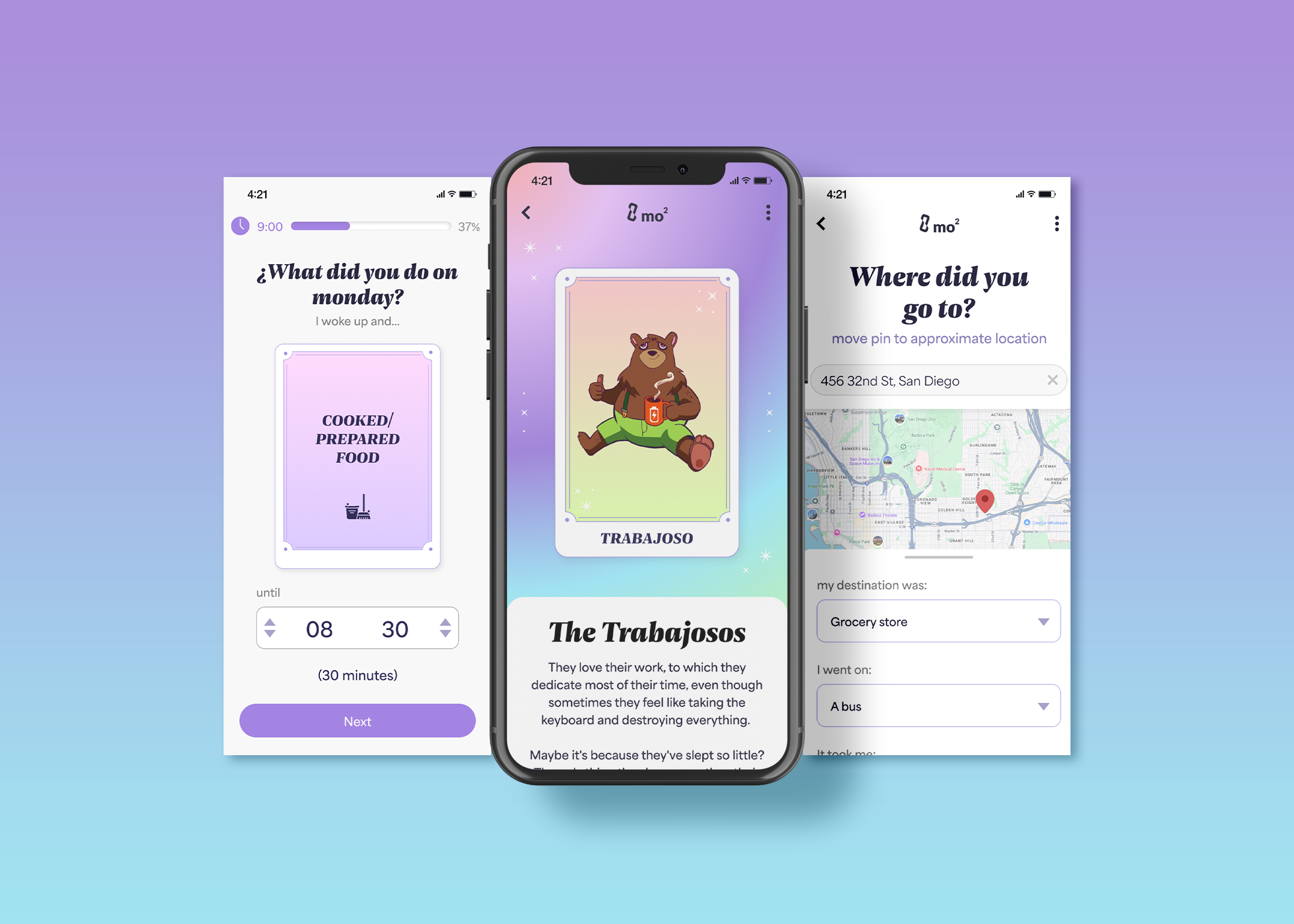
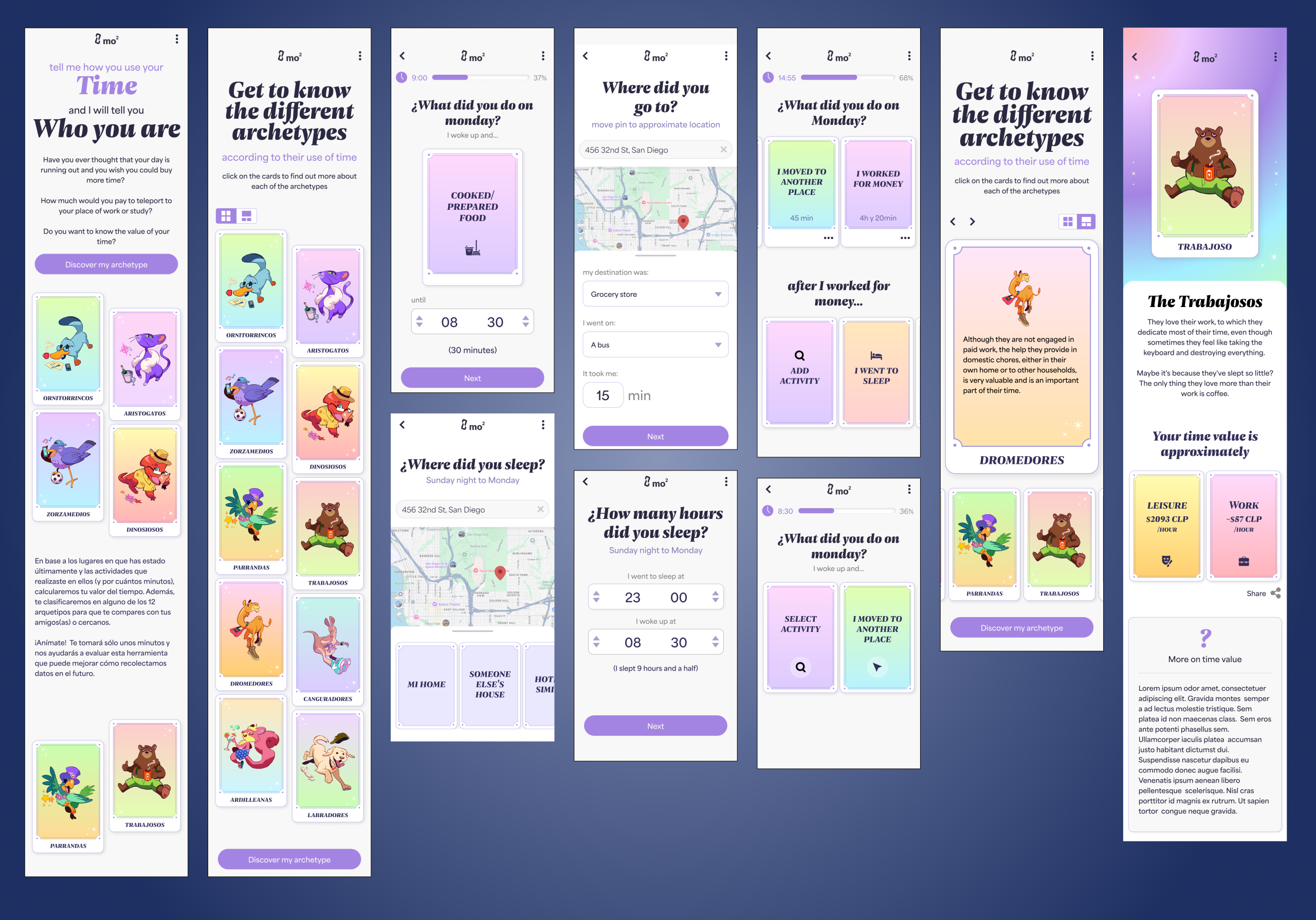
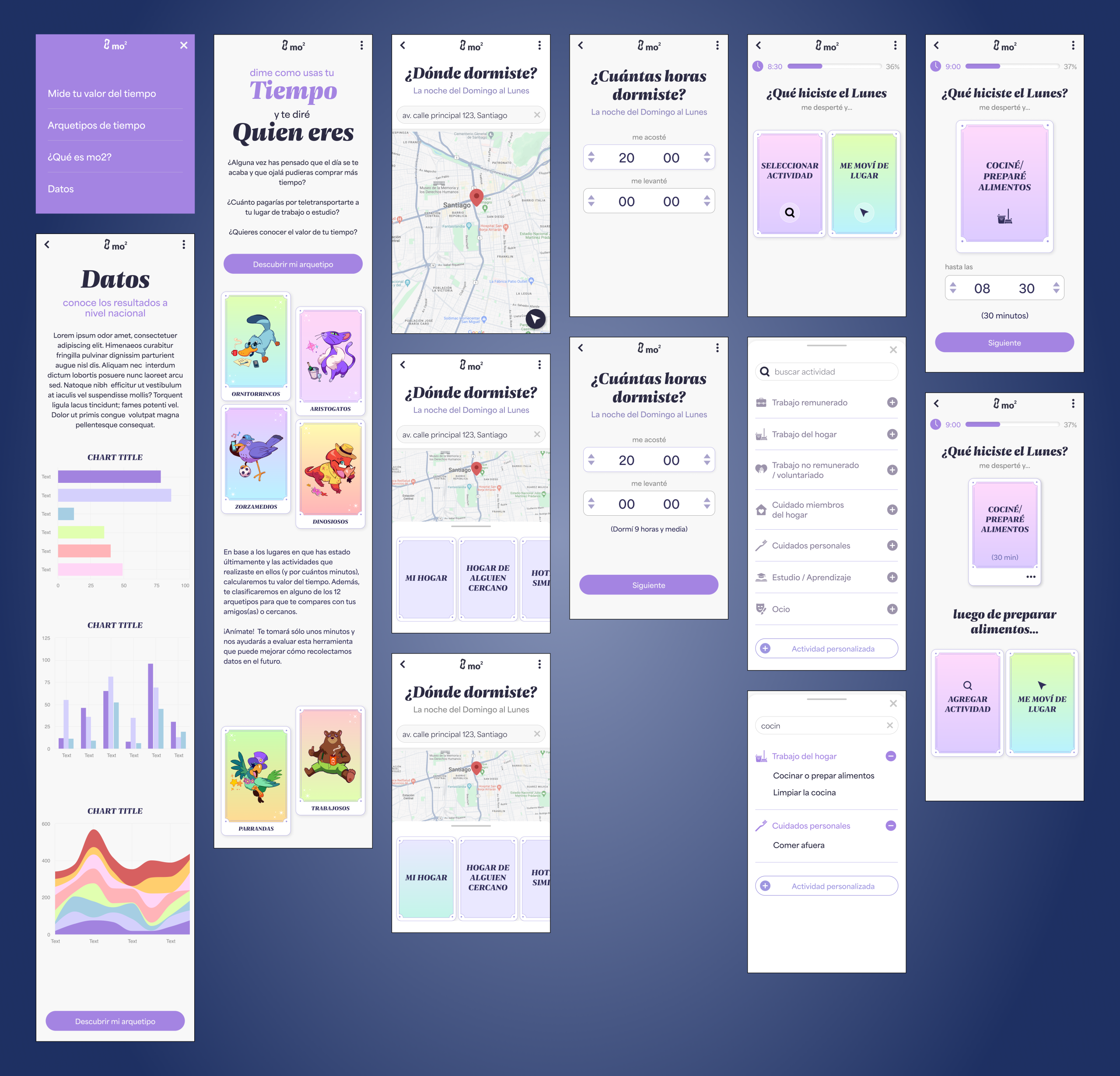
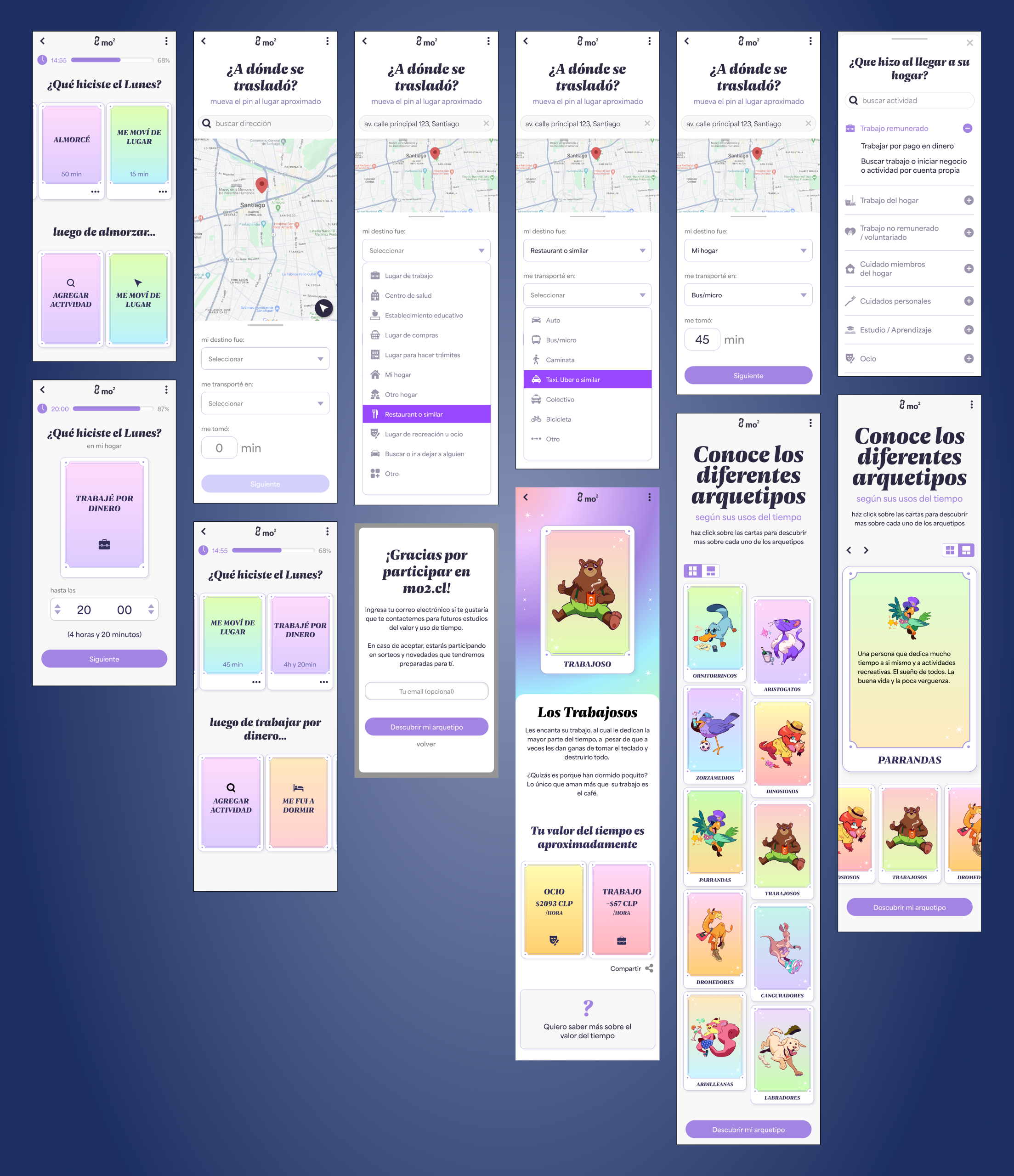
Takeaways
This project underscored the power of UX to translate dense content into enjoyable user journeys — even for academic tools. It also showed how combining research insights with design thinking can deliver measurable improvements in behavior, not just aesthetics.
